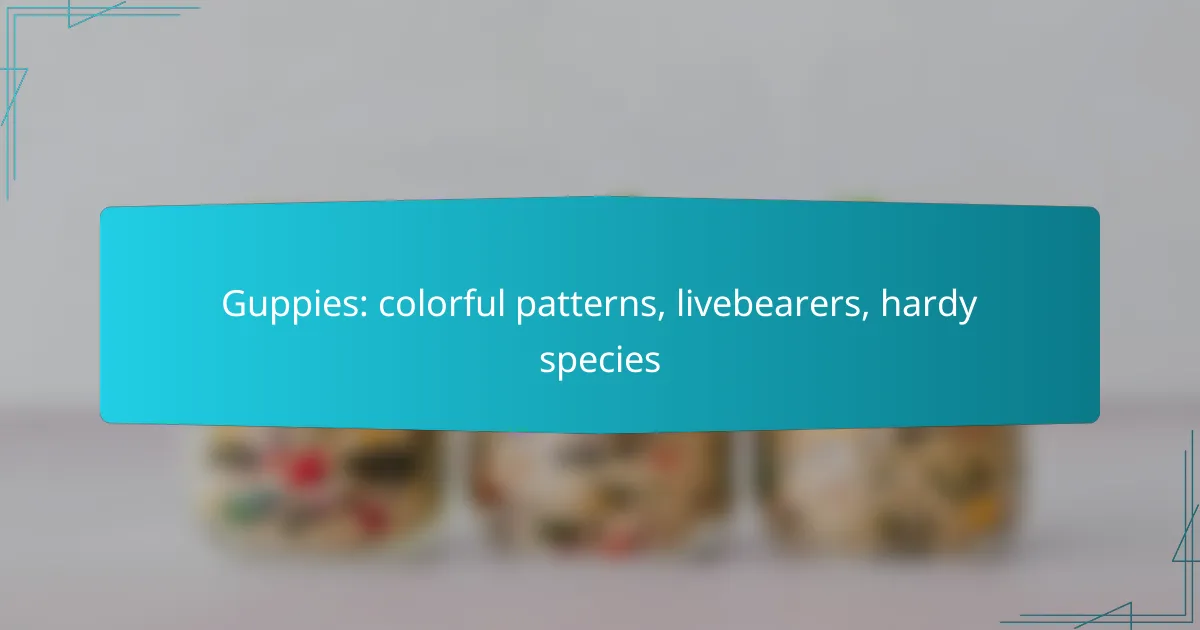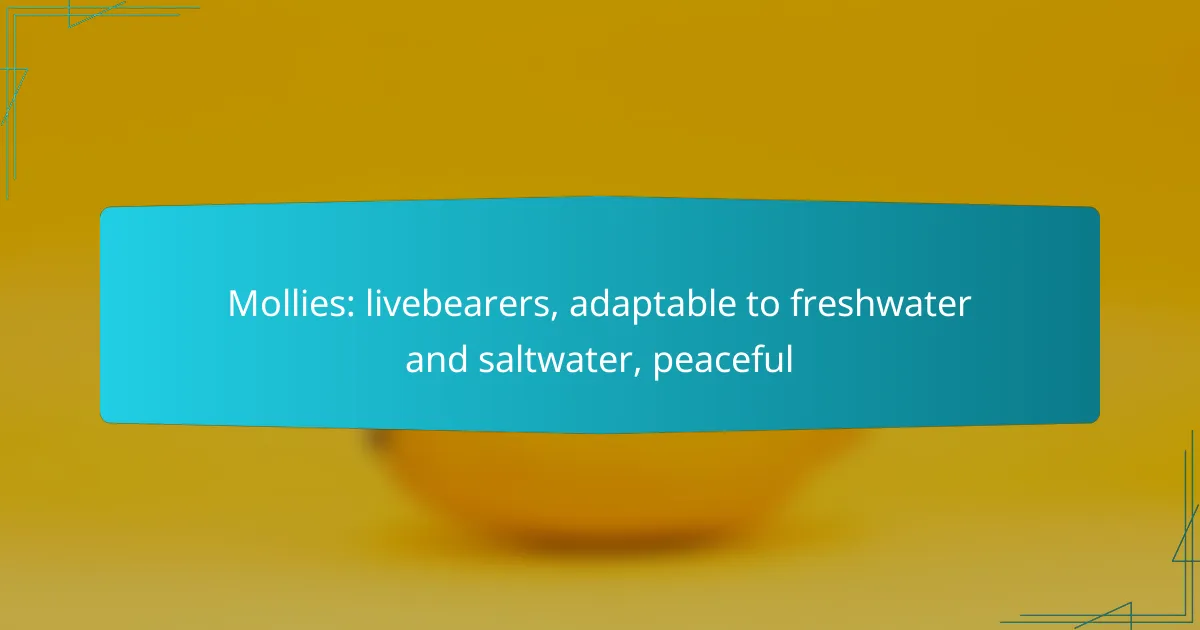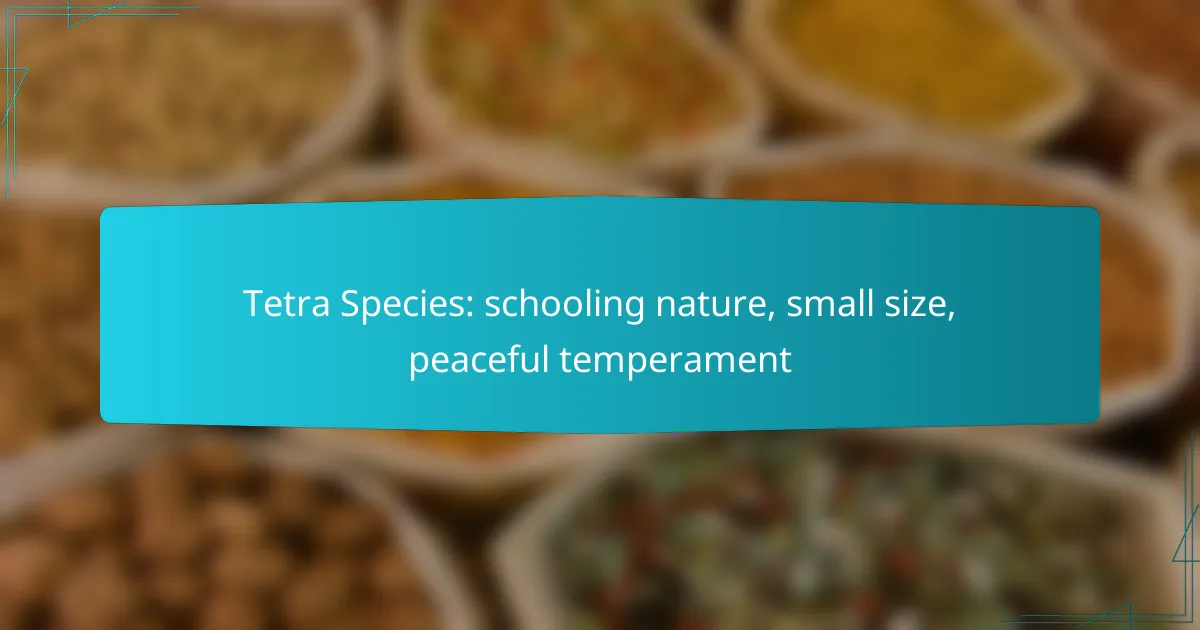Guppies are vibrant, hardy livebearers known for their stunning array of colors and patterns, making them a popular choice for aquariums. With their diverse appearances, ranging from solid hues to intricate designs, guppies not only enhance the visual appeal of your tank but also adapt well to various environments. Proper care, including optimal water quality and a balanced diet, is essential to keep these lively fish healthy and thriving.

How to choose guppies for your aquarium?
Choosing guppies for your aquarium involves selecting vibrant, healthy specimens that suit your tank’s environment. Consider factors such as color variety, hardiness, and compatibility with other fish to ensure a thriving aquatic community.
Colorful guppy varieties
Guppies are renowned for their stunning colors and patterns, which can range from bright reds and blues to intricate spots and stripes. Popular varieties include the Endler’s guppy, known for its vivid hues, and the fancy guppy, which showcases elaborate tail designs. When selecting guppies, look for those with clear, vibrant colors and well-defined patterns.
It’s beneficial to choose a mix of colors to create a visually appealing aquarium. Consider purchasing from reputable breeders or stores that maintain healthy stock, as this increases the likelihood of vibrant, disease-free fish.
Hardy species for beginners
Guppies are one of the most resilient fish, making them ideal for beginner aquarists. They can adapt to a range of water conditions and are generally easy to care for, thriving in temperatures between 22°C and 28°C. Their hardiness allows new fishkeepers to learn the ropes without overwhelming challenges.
When starting out, opt for a mix of male and female guppies to promote natural breeding behavior, but be mindful of population control, as they reproduce quickly. Regular water changes and a balanced diet will help maintain their health and vibrancy.
Livebearer characteristics
As livebearers, guppies give birth to free-swimming young rather than laying eggs, which simplifies breeding for enthusiasts. This characteristic allows for a more interactive experience as you can observe the birth process and care for the fry. It’s essential to provide ample hiding spots in the aquarium to protect the young from adult guppies.
Guppies are social fish that thrive in groups, so keeping them in schools of at least five is recommended. This social behavior enhances their well-being and promotes natural interactions, contributing to a lively aquarium environment.

What are the best guppy care practices?
To ensure healthy guppies, focus on maintaining optimal water quality, providing a balanced diet, and selecting compatible tank mates. These practices are essential for keeping guppies vibrant and thriving in your aquarium.
Water quality requirements
Guppies thrive in clean, well-maintained water. Aim for a temperature range of 24-28°C (75-82°F) and a pH level between 6.8 and 7.8. Regular water changes, about 10-20% weekly, help maintain water quality and remove harmful toxins.
Use a reliable water testing kit to monitor ammonia, nitrite, and nitrate levels. Ammonia and nitrite should be at 0 ppm, while nitrates should ideally stay below 20 ppm. Keeping these parameters stable is crucial for the health of your guppies.
Feeding guidelines
Feed guppies a varied diet that includes high-quality flake food, frozen or live foods like brine shrimp, and vegetable matter. Offer small amounts 2-3 times a day, ensuring they consume the food within a few minutes to prevent overfeeding.
Avoid excessive protein, as it can lead to health issues. Incorporate plant-based foods occasionally to provide essential nutrients and promote digestive health. Monitor their body condition to adjust feeding amounts as needed.
Tank mates compatibility
Guppies are generally peaceful and can coexist with various community fish. Ideal tank mates include neon tetras, mollies, and platies, which share similar water requirements and temperaments.
Avoid aggressive species like cichlids or larger fish that may see guppies as prey. Always introduce new fish gradually and monitor interactions to ensure compatibility and reduce stress among tank inhabitants.

What are the common guppy patterns?
Common guppy patterns include a variety of colors and designs that make these fish visually appealing. Patterns can range from solid colors to intricate combinations of spots, stripes, and marbling, influenced by genetics and breeding practices.
Popular color patterns
Some of the most popular guppy color patterns include the Cobra, which features a series of dark spots on a lighter background, and the Mosaic, known for its vibrant, multicolored scales. Other notable patterns are the Snakeskin, characterized by a scale-like appearance, and the Tuxedo, which has a dark body with a lighter tail.
These patterns can vary significantly in intensity and hue, with colors like blue, red, yellow, and green being common. Breeders often select for specific patterns, leading to a wide range of visually stunning guppies available in the aquarium trade.
Genetic factors affecting patterns
The genetic makeup of guppies plays a crucial role in determining their color patterns. Traits are inherited from parent fish, and selective breeding can enhance or modify these traits over generations. For example, certain genes are responsible for the intensity of color and the presence of specific patterns.
Understanding the genetics behind guppy patterns can help hobbyists breed for desired traits. It’s important to note that inbreeding can lead to health issues, so maintaining genetic diversity is essential for producing hardy and vibrant guppies.

How to breed guppies successfully?
To breed guppies successfully, create a suitable environment that mimics their natural habitat and provides optimal conditions for reproduction. Focus on water quality, temperature, and a balanced diet to ensure healthy breeding and fry survival.
Breeding setup essentials
Start with a well-maintained aquarium of at least 10 gallons to provide ample space for the guppies. Use a filtration system to keep the water clean and maintain a temperature between 24-28°C (75-82°F). Adding live plants can offer hiding spots for fry and help maintain water quality.
Ensure a proper male-to-female ratio, ideally one male for every two to three females, to reduce stress on the females and increase breeding success. Regularly monitor water parameters, including pH (around 6.8-7.8) and ammonia levels, to create a stable environment.
Gestation period and care
The gestation period for guppies typically lasts around 21-30 days, depending on water temperature and overall health. Pregnant females will display a dark spot near their anal fin, indicating that they are close to giving birth. During this time, provide high-quality food rich in protein to support the developing fry.
Once the fry are born, remove the mother to prevent her from eating them. Offer finely crushed flakes or specialized fry food to ensure proper growth. Maintain clean water conditions and perform regular water changes to promote a healthy environment for the fry to thrive.

What are the health issues in guppies?
Guppies can experience various health issues, primarily due to poor water quality, stress, and infectious diseases. Common problems include fin rot, ich, and swim bladder disorders, which can significantly affect their well-being and lifespan.
Common diseases and treatments
Guppies are susceptible to several diseases, including fin rot, which is often caused by bacteria in dirty water. Treatment typically involves improving water conditions and using antibiotics or antifungal medications as needed.
Ich, a parasitic infection, presents as white spots on the skin and fins. It can be treated with medicated baths or by raising the water temperature to speed up the life cycle of the parasite, allowing for easier eradication.
Swim bladder disorders can affect a guppy’s buoyancy, leading to floating or sinking. Treatment may involve adjusting their diet or adding aquarium salt to the water to help with recovery.
Preventive care measures
Maintaining optimal water quality is crucial for preventing health issues in guppies. Regular water changes, ideally 25-50% weekly, can help keep ammonia and nitrate levels low.
Providing a balanced diet with high-quality flakes and occasional live or frozen foods supports their immune system. Additionally, avoiding overcrowding in the tank reduces stress and the likelihood of disease outbreaks.
Routine observation of guppies for any signs of illness, such as changes in behavior or appearance, allows for early intervention. Quarantining new fish before introducing them to the main tank can also prevent the spread of diseases.

How to create a guppy-friendly environment?
Creating a guppy-friendly environment involves ensuring proper tank conditions, suitable space, and adequate decor. These elements contribute to the health and happiness of guppies, making them thrive in your aquarium.
Tank size recommendations
For guppies, a minimum tank size of 20 liters (approximately 5 gallons) is recommended to provide adequate space for swimming and breeding. Larger tanks, such as those in the range of 40 to 75 liters (10 to 20 gallons), can support more fish and help maintain water quality.
When considering tank size, remember that guppies are social creatures and prefer to be in groups. A good rule of thumb is to allow at least one guppy per 2 to 4 liters (0.5 to 1 gallon) of water to prevent overcrowding and stress.
Decor and hiding spots
Providing decor and hiding spots is essential for guppies, as it mimics their natural habitat and reduces stress. Use plants, rocks, and driftwood to create a visually appealing environment that offers shelter and places to explore.
Live or artificial plants can be particularly beneficial, as they not only provide hiding spots but also help maintain water quality. Ensure that any decorations are smooth and free of sharp edges to prevent injury to your guppies.










